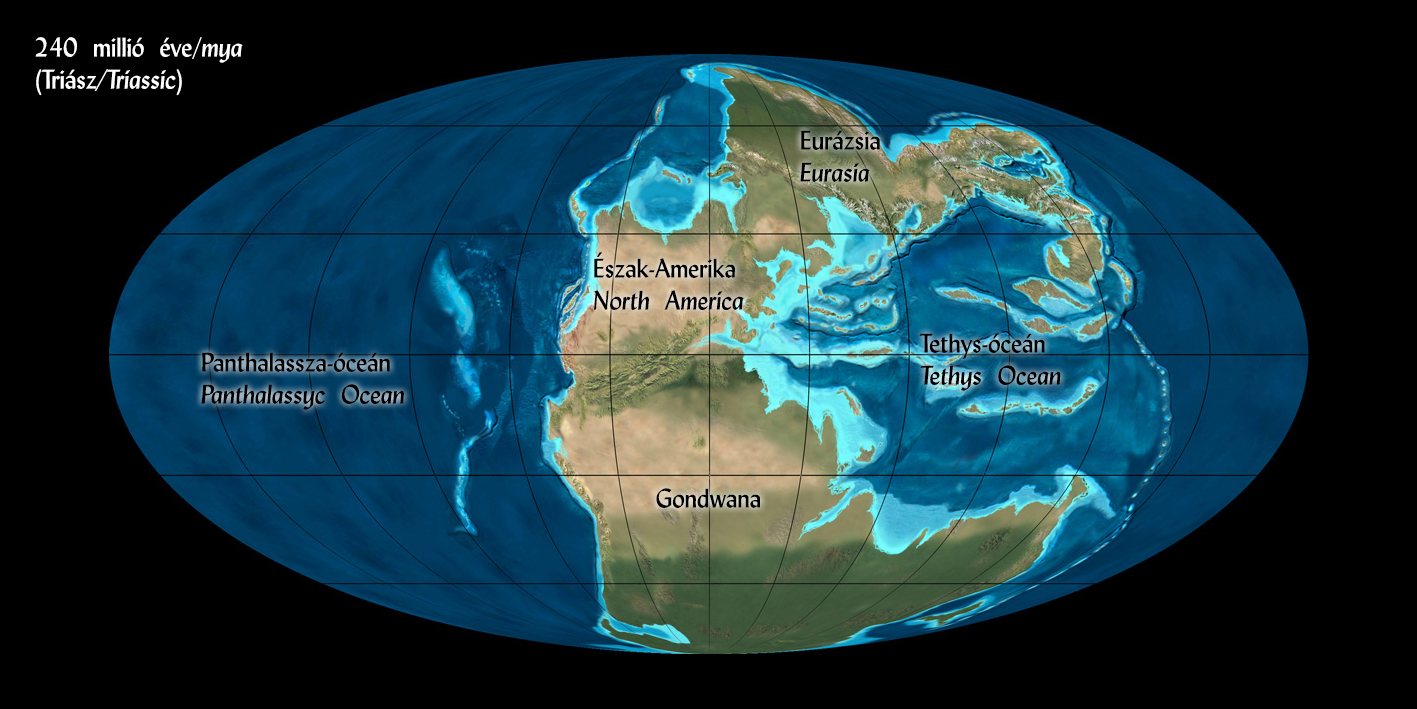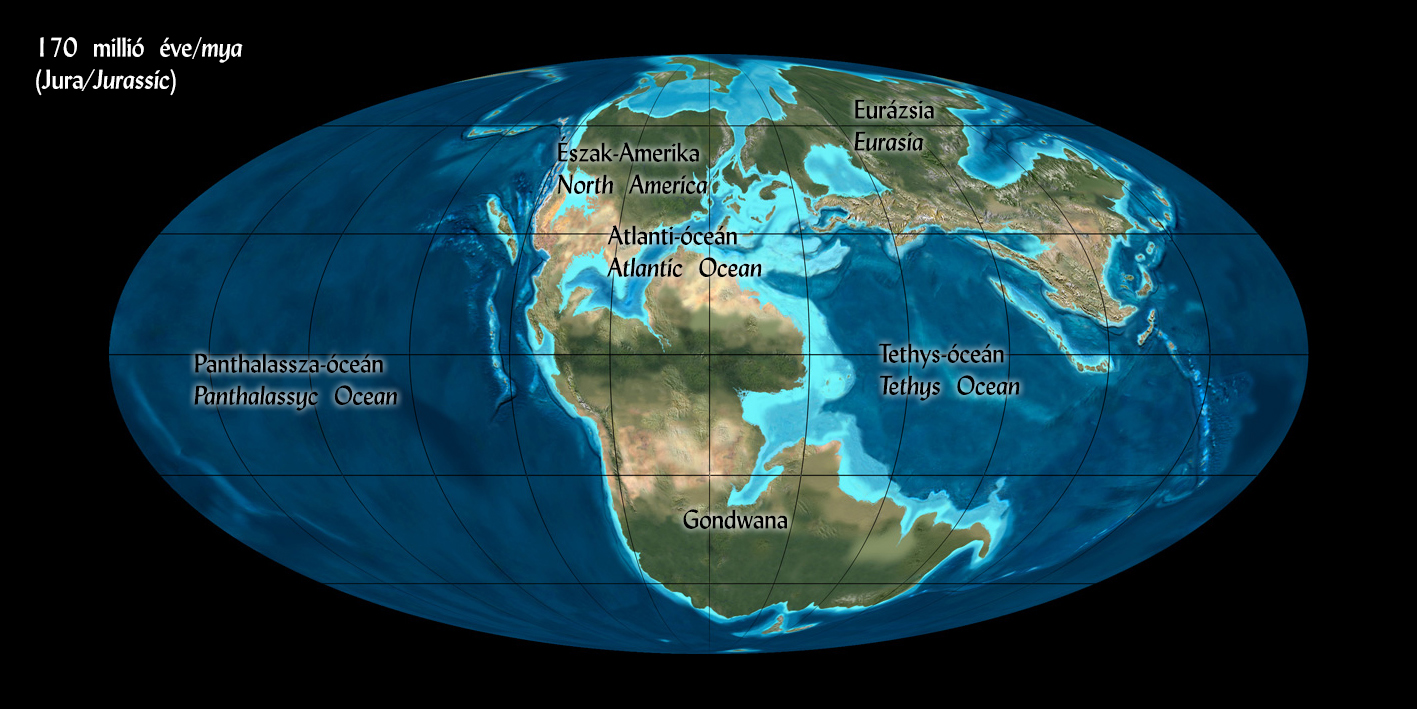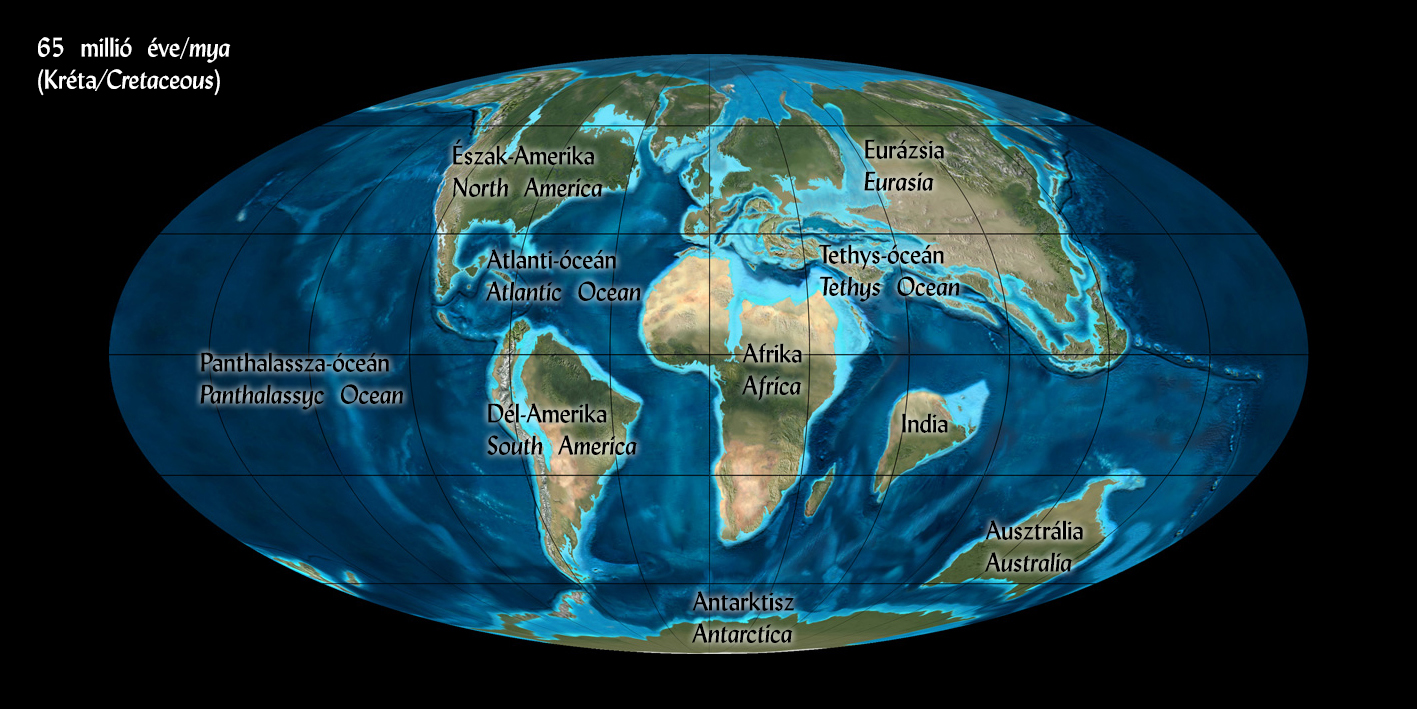ANCIENT ENVIRONMENT, FOSSILS, REPRODUCTION, DIET, BODY
Appearance of the changing Earth during the Mesozoic
At the end of the Palaeozoic, the continents formed a unified supercontinent, called Pangea. From the east, the wedge-shaped bay of the Tethys Ocean was pushed into it. At the end of the Triassic, some 200 mya, due to the flow of the internal, hot liquid rock of the Earth, some parts of the earth’s crust were arched, and somewhere thinning and splitting occurred. Rift systems were formed, and as they became larger, the continents moved away from each other.
In the middle of the Jurassic, the slow inclusion of the Tethys Ocean began, as Africa and Eurasia came together. At the same time, the North Atlantic Ocean began to grow, first at north and later at south as well. At the end of this period, the break-up of the southern Gondwana allowed the Indian Ocean to grow. India was an independent subcontinent at this time, and Australia and Antarctica still formed a single contiguous land.
During the Cretaceous, the sea level increased, and many areas were flooded, which broke up the dryland connections between continents. Most of the oil sources were formed this time. The build-up of the Eurasian mountain range and the Pacific mountain system started. The continents became similar to their current form, but they arrived in their present place after a long migration in the Tertiary.


